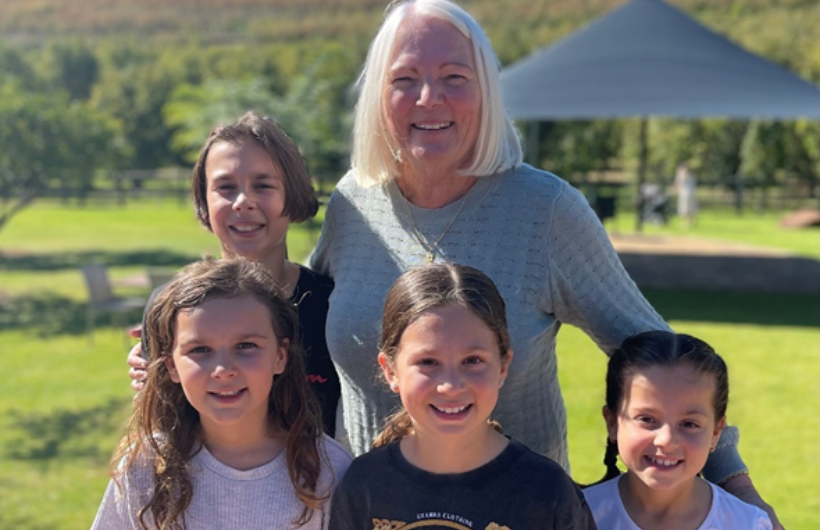
Diane was forced to retire early due to chronic pain
Diana Wilkinson, Specialist Nurse here at the Paget’s Association summarises Diane Atkinson’s experience of Paget’s disease below.
Diane’s home is in the picturesque landscapes of Western Australia. A former Associate Principal at a high school, she was forced to retire prematurely due to chronic pain. Beyond her career, Diane finds enjoyment in gardening, knitting, documenting her family history, and passionately supporting the West Coast Eagles in the Australian Football League.
When asked about her diagnosis of Paget's disease, Diane shared a challenging journey that included a total knee replacement seven years ago. During the procedure, her thigh bone (femur) was found to have a fracture and a bone in her lower leg (tibia) was found to be very ‘chalky’ necessitating the use of surgical glue to secure the new knee in place. The recovery from this initial surgery was lengthy, requiring six months away from work and a full year on crutches. After a year of intensive physiotherapy and hydrotherapy her knee wasn’t healing well, prompting her surgeon to request scans that ultimately led to a diagnosis of Paget's disease in her tibia and pelvis, despite no known family history of the condition.
Diane revealed that Paget's disease has significantly impacted her tibia, resulting in the bone bowing and showing signs of stress, yet thankfully avoiding fracture. The chronic pain has been a constant companion and the disease has also triggered complications, particularly osteoarthritis in the knee and hip adjacent to the affected bone. This exacerbated the overall impact of Paget's disease on her daily life and added complexity to her ongoing battle with chronic pain.
Two years after her total knee replacement, Diane had to undergo a hip replacement and now, six years after her knee replacement, she faces the prospect of a revision due to signs of it loosening. Diane is taking vitamin D and calcium supplements, as well as painkillers. She commented, “Hopefully the revision of the knee will give me some pain relief. Fingers crossed”.
Diane detailed her treatment journey. Initially she was prescribed actonel, a daily tablet that proved to be ineffective, prompting a referral to a rheumatologist. The specialist suggested a zoledronic acid infusion which she had and this was followed by a further infusion 12 months later. Unfortunately, the infusions brought their own challenges. Following the first, Diane experienced side effects, including nausea, flu-like symptoms and widespread body pain. Unusually, Diane described the second infusion as being worse than the first. Severe vomiting necessitating a visit to the Emergency Department. This is unusual because those who have had side effects the first time often don’t on the second occasion.
There is no doubt that Paget's disease has had a significant impact on Diane’s life, as not only did it lead to early retirement but it also placed severe limitations on her everyday activities. Her spirit, however, prevails as she continues to do what she can to enjoy life within the constraints of her condition.
In her advice to those newly diagnosed with Paget's disease, Diane emphasises the importance of research and seeking support through groups like the Paget’s Association. Despite the charity being based in the UK while Diane lives in Australia, she has found the support and resources provided invaluable. The Association has connected her with a community that understands her struggles, offering much-needed guidance and encouragement.
Diane advocates exercise and finds hydrotherapy effective. She has incorporated these into a daily routine that includes a 1.5 km walk, 10 km on an exercise bike every second day and hydrotherapy on alternating days. These activities have become an integral part of her efforts to maintain her physical well-being.
Her journey is a testament to resilience in the face of adversity. Despite the challenges, Diane has found ways to adapt and incorporate activities that bring some relief. Her story serves as an encouraging guide for those grappling with the complexities of Paget's disease, offering insights into managing the condition and finding support in various resources and physical activities.
